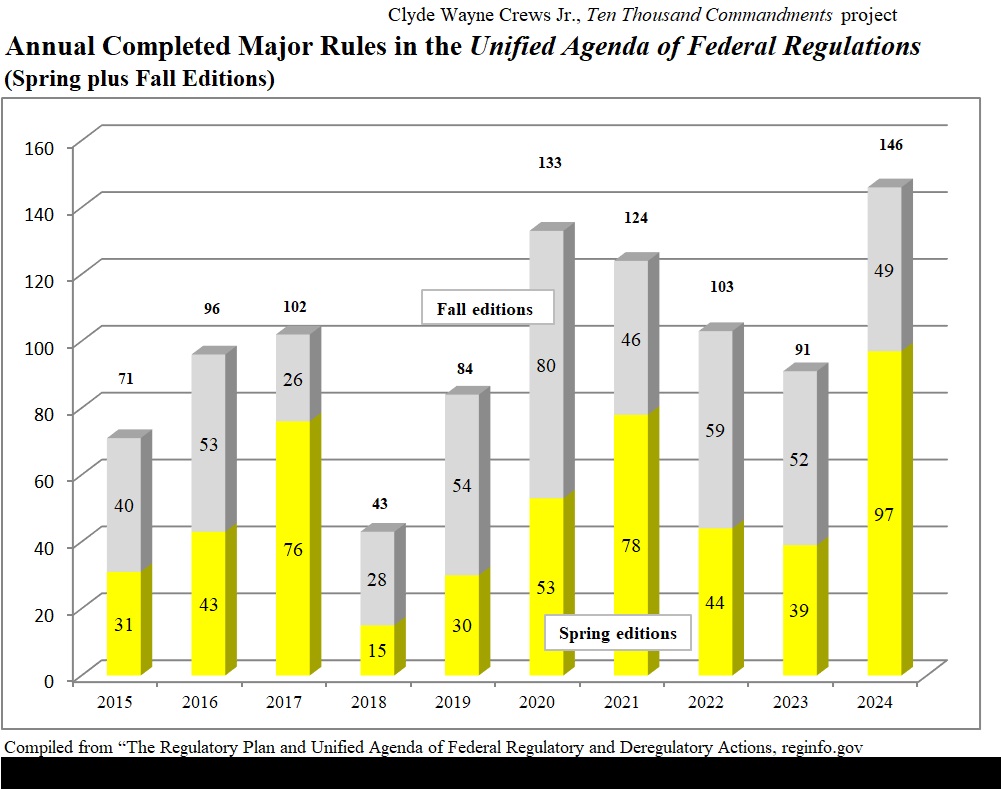Charting a glide path to overturn Biden regulations in the 119th Congress

Photo Credit: Getty
As the 119th Congress and incoming Trump administration prepare to govern, one key weapon in their arsenal will be the Congressional Review Act (CRA) of 1996.
Among other provisions, this often-overlooked law allows the incoming Congress to overturn regulations issued in the final 60 legislative days of the 118th Congress.
Expect a flurry of so-called resolutions of disapproval aimed at costly Biden administration regulations that, fortunately for the over-regulated, fall within this window. Older rules, however, will require rewrites, court challenges, or strategic non-enforcement by the Trump administration.
The CRA, once a dormant provision, came to life during Trump’s first term, nullifying over a dozen Obama-era rules. While it can inherently only target the most-recent fraction of the 3,000-plus rules issued annually since Biden took office, the CRA provides a high-profile opportunity to jumpstart the new deregulatory, limited-government agenda.
In a new Forbes article, I explored the alarming surge of “major” rules completed during the Biden administration, and the implications for the use of the CRA in the New Year. Major rules, as defined by the CRA itself, typically have annual economic effects of $100 million or more.
The latest Unified Agenda of Regulatory and Deregulatory Actions (which I examined in some detail here) highlights a troubling trend: a sharp increase in major rules finalized in 2024, shown in my chart just below. Many among these, including stringent energy conservation standards and expansive vehicle fuel economy regulations, represent Biden’s effort to cement his legacy and shield it from reversal. The Forbes article provides the entire inventory of these recently completed rules—plus a warning to expect more before Trump’s inauguration.

While many of these major rules fall outside the CRA’s reach due to timing, the CRA remains vital for addressing regulations finalized in Biden’s last months. Trump’s administration will also likely freeze proposed and pending rules as it pivots to an aggressive “one rule in, ten rules out” operational mode.
The CRA’s effectiveness could be amplified by the Midnight Rules Relief Act, championed by Rep. Andy Biggs (R-AZ). This legislation would allow for the bulk repeal of eligible rules rather than tackling them individually—an essential early move for regulatory relief.
Success with a record number of CRA resolutions would be a strong first step, laying the groundwork for broader reforms. Key initiatives for Trump, Congress, and the upcoming advisory board called the Department of Government Efficiency (DOGE) should include:
- Terminating most agencies and programs by privatizing functions or returning them to state and local control;
- Challenging regulations not properly submitted to Congress and the Government Accountability Office, or better, simply deeming them void;
- Deeming regulations improperly submitted to Congress and the Government Accountability Office void, or challenging their validity;
- Requiring affirmative congressional approval of all major or controversial rules;
- Disciplining the laundering of regulation through abuse of agency guidance documents and contracting/procurement schemes.
The 119th Congress has a unique opportunity—arguably more so than the 115th Congress with Trump’s first term—to reshape the federal regulatory landscape. It begins with charting a glide path for Biden rules worthy of elimination.
For more, see:
“An Inventory Of Biden Regulations To Overturn Quickly In The 119th Congress,” Forbes.
“White House Releases Fall 2024 Unified Agenda Of Federal Regulatory And Deregulatory Actions,” Forbes.